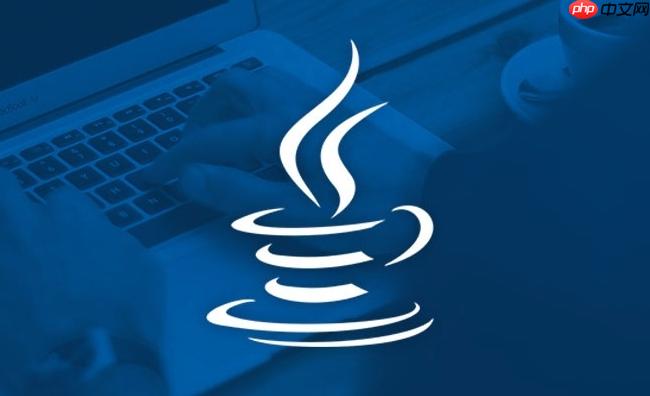答案:LinkedList适合单线程频繁增删场景,ArrayDeque更适合高性能访问;并发环境下应选用ConcurrentLinkedQueue或LinkedBlockingQueue。

在Java中,使用LinkedList模拟队列非常直接。LinkedList实现了Deque接口,而Deque接口提供了队列和栈的双端操作,因此LinkedList可以轻松地用作队列。核心在于使用
offer()
方法添加元素到队尾,
poll()
方法从队首移除元素,以及
peek()
方法查看队首元素但不移除。
解决方案:
import java.util.LinkedList; import java.util.Queue; public class LinkedListQueueExample { public static void main(String[] args) { Queue<String> queue = new LinkedList<>(); // 添加元素到队尾 queue.offer("First"); queue.offer("Second"); queue.offer("Third"); System.out.println("Queue: " + queue); // 查看队首元素 String peekedElement = queue.peek(); System.out.println("Peeked Element: " + peekedElement); // 移除队首元素 String polledElement = queue.poll(); System.out.println("Polled Element: " + polledElement); System.out.println("Queue after poll: " + queue); // 遍历队列 System.out.println("Iterating through the queue:"); for (String element : queue) { System.out.println(element); } // 检查队列是否为空 boolean isEmpty = queue.isEmpty(); System.out.println("Is the queue empty? " + isEmpty); } }
LinkedList和ArrayDeque,哪个更适合模拟队列?
LinkedList的优点在于动态调整大小,插入和删除操作效率高(O(1)),尤其是在队列头部或尾部进行操作时。但LinkedList的缺点是访问元素时需要遍历,时间复杂度为O(n)。ArrayDeque在大多数情况下性能更好,因为它基于数组实现,访问速度快。ArrayDeque在扩容时会有性能损耗,但通常情况下仍然优于LinkedList。
立即学习“Java免费学习笔记(深入)”;
选择哪个取决于具体的使用场景。如果队列大小变化频繁,且需要频繁在队列头部或尾部进行插入删除操作,LinkedList可能更合适。如果队列大小相对稳定,且需要频繁访问队列中的元素,ArrayDeque可能更合适。
使用LinkedList模拟队列时,如何处理并发问题?
LinkedList本身不是线程安全的。如果在多线程环境下使用LinkedList模拟队列,需要采取额外的同步措施,以避免并发问题,例如数据竞争和不一致。
-
使用
Collections.synchronizedList()
方法: 可以将LinkedList包装成一个线程安全的List。
import java.util.Collections; import java.util.LinkedList; import java.util.Queue; public class SynchronizedLinkedListQueue { public static void main(String[] args) { Queue<String> queue = new LinkedList<>(); Queue<String> synchronizedQueue = Collections.asLifoQueue(Collections.synchronizedDeque((LinkedList<String>)queue)); // Now use synchronizedQueue in a multi-threaded environment } }注意,即使使用了
synchronizedList()
,迭代操作仍然需要手动同步,否则可能抛出
ConcurrentModificationException
。
-
使用
java.util.concurrent.ConcurrentLinkedQueue
: 这是一个线程安全的队列实现,专门为并发环境设计。
import java.util.Queue; import java.util.concurrent.ConcurrentLinkedQueue; public class ConcurrentLinkedQueueExample { public static void main(String[] args) { Queue<String> queue = new ConcurrentLinkedQueue<>(); // Now use queue in a multi-threaded environment } }ConcurrentLinkedQueue
使用非阻塞算法,通常具有更好的性能。
-
使用
java.util.concurrent.LinkedBlockingQueue
: 这是一个阻塞队列,可以在队列为空时阻塞消费者线程,直到有元素可用。
import java.util.concurrent.BlockingQueue; import java.util.concurrent.LinkedBlockingQueue; public class LinkedBlockingQueueExample { public static void main(String[] args) throws InterruptedException { BlockingQueue<String> queue = new LinkedBlockingQueue<>(); // Producer thread new Thread(() -> { try { queue.put("Element1"); queue.put("Element2"); } catch (InterruptedException e) { Thread.currentThread().interrupt(); } }).start(); // Consumer thread new Thread(() -> { try { String element1 = queue.take(); String element2 = queue.take(); System.out.println("Consumed: " + element1 + ", " + element2); } catch (InterruptedException e) { Thread.currentThread().interrupt(); } }).start(); } }
选择哪种同步方法取决于具体的并发需求。
ConcurrentLinkedQueue
通常是高并发场景下的首选,因为它避免了锁竞争。
LinkedBlockingQueue
适合生产者-消费者模式,其中需要阻塞等待。
LinkedList模拟队列在实际项目中的应用场景有哪些?
虽然
ConcurrentLinkedQueue
和
LinkedBlockingQueue
通常是并发场景下的首选,但LinkedList在一些特定场景下仍然有用:
-
简单任务调度: 在单线程环境中,可以使用LinkedList实现一个简单的任务队列,用于调度异步任务。
-
消息传递: 在一些简单的消息传递系统中,可以使用LinkedList作为消息队列。例如,一个GUI应用中使用LinkedList来处理用户事件。
-
数据缓冲: LinkedList可以作为数据缓冲队列,用于临时存储数据,例如,在数据处理管道中。
-
算法实现: 在一些算法实现中,例如广度优先搜索(BFS),可以使用LinkedList来模拟队列。
尽管如此,对于高并发、高性能的应用,优先考虑使用
ConcurrentLinkedQueue
或
LinkedBlockingQueue
等专门的并发队列实现。





评论(已关闭)
评论已关闭